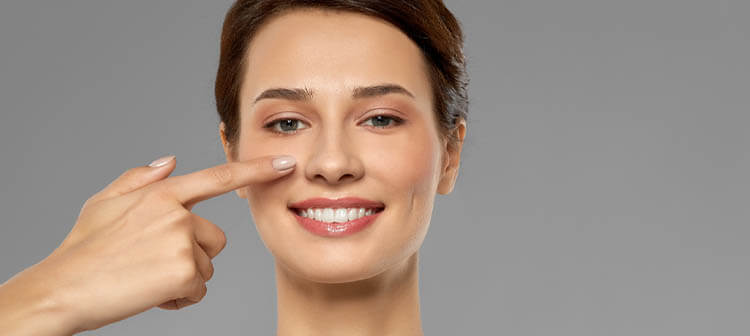As the nose is the dominant, central facial feature, its appearance and relation to your other features can be a critical factor in how you feel about yourself. A too big and wide nose is a common aesthetic concern.
Can a big nose be reduced in size?
The nose is composed of bone and cartilage, and it is possible to reduce the size of a prominent nose by removing or reshaping the cartilaginous and bony skeleton. Surgeon choice is an important consideration to ensure the optimal outcome to ensure that your nose is balanced with your other facial features and that nasal function is not compromised.
What causes big or wide noses?
Usually, a too big and wide nose is inherited, but an injury, illness or infection can cause the nose to become wider.
Does your nose get bigger as you get older?
It’s a common myth that our noses and ears continue to grow bigger as we age. Cartilage and bone stop growing when you reach puberty, but gravity affects the soft tissues, collagen, and other fibres that provide support and structure begin to break down. As a result, the nose – and earlobes – stretch out and sag downwards and can appear wider and bigger.
Gravity also affects the rest of our face, and as the soft tissue in the mid-face depletes and descends, the nose can appear more prominent.
What are the best treatments for big or wide noses?
A non-surgical nose reshaping procedure with dermal fillers can address specific problems with the nose’s appearance, but it cannot address a big and wide nose as it can only add volume. However, adding volume to flat cheeks or enhancing a recessive chin with dermal fillers can improve facial balance and make a big, broad nose look less prominent.
Rhinoplasty remains the gold standard procedure for big or wide noses as it’s possible to reshape and reduce the cartilage and bone. In order to reduce a wide nose bridge, the nasal bridge is carefully reduced by making small fractures along the upper nasal bones to thin them.
Narrowing a wide, bulbous nose tip is possible by reducing and reshaping the cartilage that forms the nasal tip. It’s also possible to narrow the nose’s nostrils and ala, which is the wing of the nose. By removing a portion of these wings, the nose looks smaller.
The procedure can be performed as either an open or closed rhinoplasty. A closed rhinoplasty makes an incision inside the nostrils and is best suited for patients that only require minor nose restructuring. Although there will be little visible scarring afterwards, it can limit the changes that a surgeon can make.
An open rhinoplasty involves an incision between the nostrils, under the nasal tip, and then the skin is lifted back to reveal the entire structure of the nose. This offers greater access and is preferable for big, wide noses that need major restructuring. Scarring is still well hidden once healed as the incisions are made in the natural contours of the nose.
ASSOCIATED PROCEDURES: Rhinoplasty
Quick Links
TREATMENT OPTION: RHINOPLASTY

Rhinoplasty is a surgical procedure that can define, reshape and restructure the nose.
Rhinoplasty can create a more symmetrical and proportional nose to complement the overall facial aesthetics of the patient but can also serve to correct breathing impairments.
Discover our rhinoplasty proceduresTREATMENT OPTION: NOSE TIP SURGERY

Rhinoplasty is an operation to change the size and shape of your nose. But when some people say that they dislike the appearance of their nose, they’re often actually focused on the appearance of the tip of their nose. Tip rhinoplasty is surgery to improve the shape of the tip (the rest of your nose is left alone).
Discover our nose tip surgery treatment















